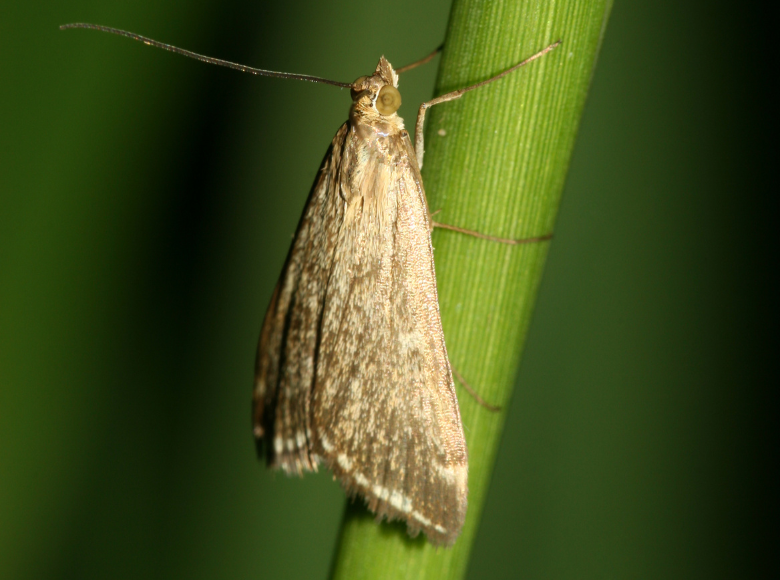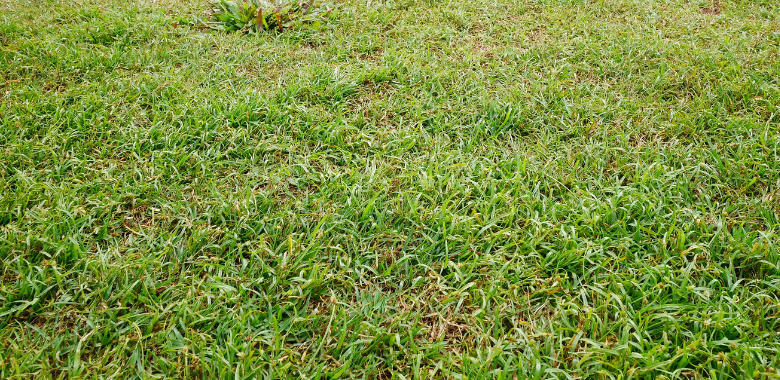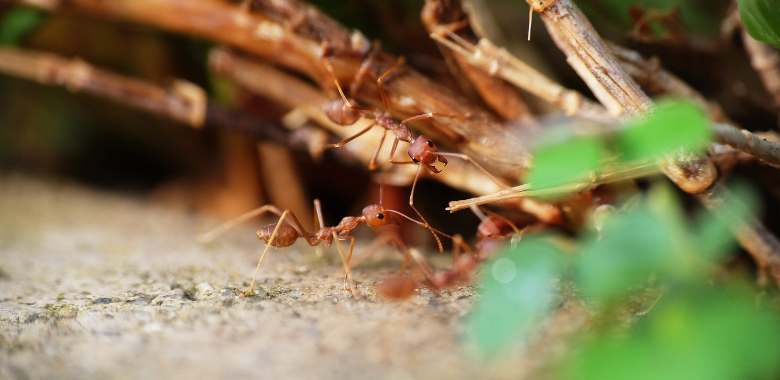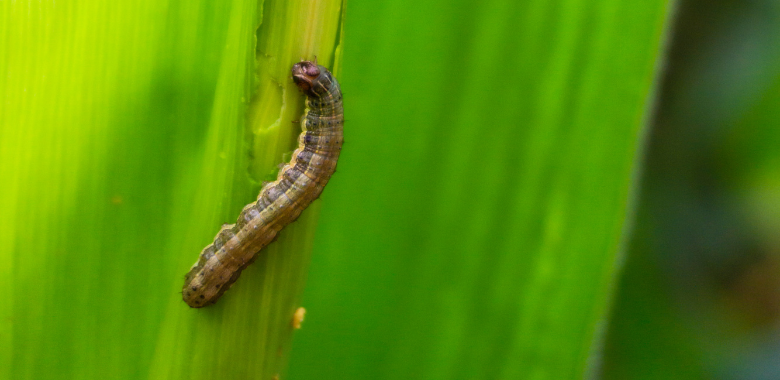Several mites and insects live and sustain in the turf grass of golf courses. Some are beneficial, some are harmless, and some are pests. Only a few cause considerable damage and require immediate action.
Remember, insects are only one of many possible reasons for thin, brown, or dead grass. Drought, diseases, and nutritional deficiencies can also be destructive. Proper identification is the first step to managing insect pests on golf courses, which can prevent unnecessary pesticide applications and save money.
In general, healthy turf is less susceptible to pests and can recover quickly from a pest infestation. Mow at the correct height for the grass species, avoid unnecessary applications of soluble nitrogen fertilizers, eliminate thick layers of thatch, and avoid over-watering. Check for pest activity every seven to ten days during active seasons, especially in spots where damage tends to recur. Here are some of the most common pests to look out for:
1.Mole Crickets
Three kinds of mole cricket species—tawny, southern, and short-winged were introduced from South America around 1900 and are serious pests of turf grass in Florida.

The front legs of mole crickets appear flattened and are adapted for digging. Southern and tawny mole cricket adults grow to nearly 4 cm long, while the short-winged mole cricket adults only grow 2.5 cm. The tawny mole cricket has a light, creamy brown color and the southern has a gray to dark brown color with four visible light spots on the area right behind the head.
In Central and North Florida, egg laying starts in March. Eggs take 20 to 25 days to hatch. Nymphs feed in summer, shedding five to eight times before developing into adults in the fall. Only one generation of southern mole crickets occurs per year, totaling two generations in a year in southern Florida.
Bahiagrass, Bermudagrass, and Centipedegrass are frequently attacked by mole crickets. Short-winged and tawny mole crickets are herbivorous and feed on all parts of the grass. The southern mole cricket is a scavenger and predator. All three species cause considerable damage to the grassroots tunneling through the surface layer of the soil. The tunneling loosens the soil causing the grass gets uprooted and dries out.
Mole cricket management is based on the use, condition, demand of the turf, and the life stage of the insect. Mole crickets are deeper in the soil during the day and closer to the soil surface at night so apply insecticides in the day as late as possible.
2. Tropical Sod Webworms
Tropical sod webworm is an occasionally destructive caterpillar pest of nearly all warm-season turf grasses, including Bermudagrass, Zoysiagrass, Seashore Paspalum, Centipedegrass, Bahiagrass, and St. Augustine grass. It also feeds on several cool-season turf grasses.

Adult sod webworms emerge approximately after seven days after pupation. Adults have a wingspan of 19 to 25 mm, are small, and are tan to gray in color. The adults do not cause destruction, however, lay small clusters of 6 to 15 flat, round eggs on grass blades at nighttime, which hatch in about one week. The complete life cycle from egg to adult takes five to six weeks. It is most active from April to November but may occur throughout the year in southern Florida.
The new larvae skeletonize the grass blades, whereas older larvae chew the grass blades close to the soil surface. They feed at night and stay curled up in the soil during the day. Damage starts to become visible in small spots of brown, short-clipped grass, nearly 2.5 to 7.5 mm in diameter. Small droppings of grass are visible on the ground surface. Larvae cause the grass to look irregularly shaped or ragged as they chew notches in the leaves. Sod webworms can especially damage close-cut turf, however, they rarely cause continuing damage to high-cut turf.
Treat sod webworms at the first sign of damage to get best results. Insecticides prove effective in case of younger caterpillars. Caterpillars are an issue in early fall, mainly if the turf was fertilized thoroughly in late summer.
3. Bermudagrass Mite

The bermudagrass mite is an under-recognized turfgrass pest, and its damage is often misunderstood for other pests. These eriophyid mites are tiny, nearly 0.2 mm long, and visible only with a 15 to 20 magnification lens. They have a somewhat carrot-like shape, are white, and have two pairs of legs, which is distinctive among mites.
A single generation matures in five to ten days. The mite’s eggs are placed below the leaf sheath. After hatching, they shed twice before reaching adulthood. Every life stage sustains below the leaf sheath; hundreds of them can be found under one leaf. Mites may scatter by other insects, wind, or grass clippings.
Bermudagrass is the only host for this mite type. The mite causes the grass blade tips to change from light green to yellow and curl unusually. The tissues swell, internodes shorten, and the grass becomes tufted (known as “witch’s broom”) so that small clumps become visible. Substantial grass areas may die and become invaded with weeds. Damage is most when the grass is stressed and during dry, hot weather.
Mow as short as practical and gather and demolish grass clippings from significantly infested areas. Chemical control is restricted for mites, so employing mechanical and cultural strategies will prove successful.

4. Fire Ants
Imported fire ants are small, destructive ants that build rounded mounds or nests that can be as large as two or three feet. Imported fire ants are found throughout Florida, invading over 30 million acres. Their mounds can hamper harvesting or mowing and harm electrical equipment.
Imported fire ants are 3 to 6 mm long and are reddish-brown to black. These are social insects and can have a single queen or multiple queen colonies, each consisting of 240,000 and 500,000 per colony, respectively.
Imported fire ants do not cause direct damage to turf grass, but their mounds are unsightly, a public health concern, and can indirectly inflict turf to turn yellow and die. The red imported fire ant actively defends its colony and causes painful bites to people, livestock, pets, and wildlife.
To eliminate fire ant mounds, disperse granules around the edge of the nest. Ants carry the bait in their colony and nourish the granules’ insecticide-treated oils to one another, which leads to colony death.
5. FALL Armyworms

The fall armyworm is the most found armyworm species in Florida. The caterpillar, which is the damaging life stage, is green to brown when small, dark brown when mature, and can grow up to 4 cm in length. It features a light-colored stripe through the length of its back, with darker bands across each side. Its head is marked with a light-colored, inverted “Y” and is dark.
Pupation takes place in the soil for 10 to 14 days based on precipitation and temperature. Adult moths have white on the tips of each forewing, feature a wingspan up to 4 cm, and are brown. Eggs are circular, light green when laid, and darken with time. Females produce nearly a thousand eggs in clusters of fifty to several hundred, which are placed on light-colored objects close to turf or tips of leaf blades.
The fall armyworm can destroy turf grass in the spring and fall in Florida. Larval feeding takes place evenly in groups over larger areas instead of in patches. Caterpillars first skeletonize the grass and then create bare spots on the lawn.
Caterpillars are likely to become an issue in freshly established turf, mainly if you have fertilized the turf extremely in late summer. Take action at the first indication of damage for best results. Insecticides are more helpful against younger caterpillars.

6. Cutworms
Several species of cutworms are found in Florida. Larvae are usually hairless and consist of three pairs of true legs and five pairs of fleshy prolegs on the abdomen. Cutworms are likely to curl up when disturbed. Adults are often dull-colored and grow up to 4 cm. Round eggs are laid on leaf blades and hatch in ten days. Three to seven generations are produced each year. Cutworms stay active throughout the year in southern Florida and are aggressive from early spring to late fall in Central Florida.
Larvae dig a burrow in the thatch or ground and come out at night to chew offshoots and grass. The damage looks like circular dead grass spots or depressed spots that appear as ball marks on golf greens.
Cutworms have been more of an issue in close-cut turf on golf courses, mainly on greens, tees, and rarely fairways. Lawns seldom have problems with cutworm infestations.
Encourage healthy turf with appropriate cultural management. Removal of clippings during mowing can successfully reduce populations by removing eggs laid on grass tips. Insecticides are more useful against younger caterpillars.
At DTE Golf®, we provide excellent golf facility maintenance and partnership services. We prioritize customer service and have grown relationships that span decades by providing outstanding results. For private, municipal, resort, or daily fee courses, we are your full-service partner.
